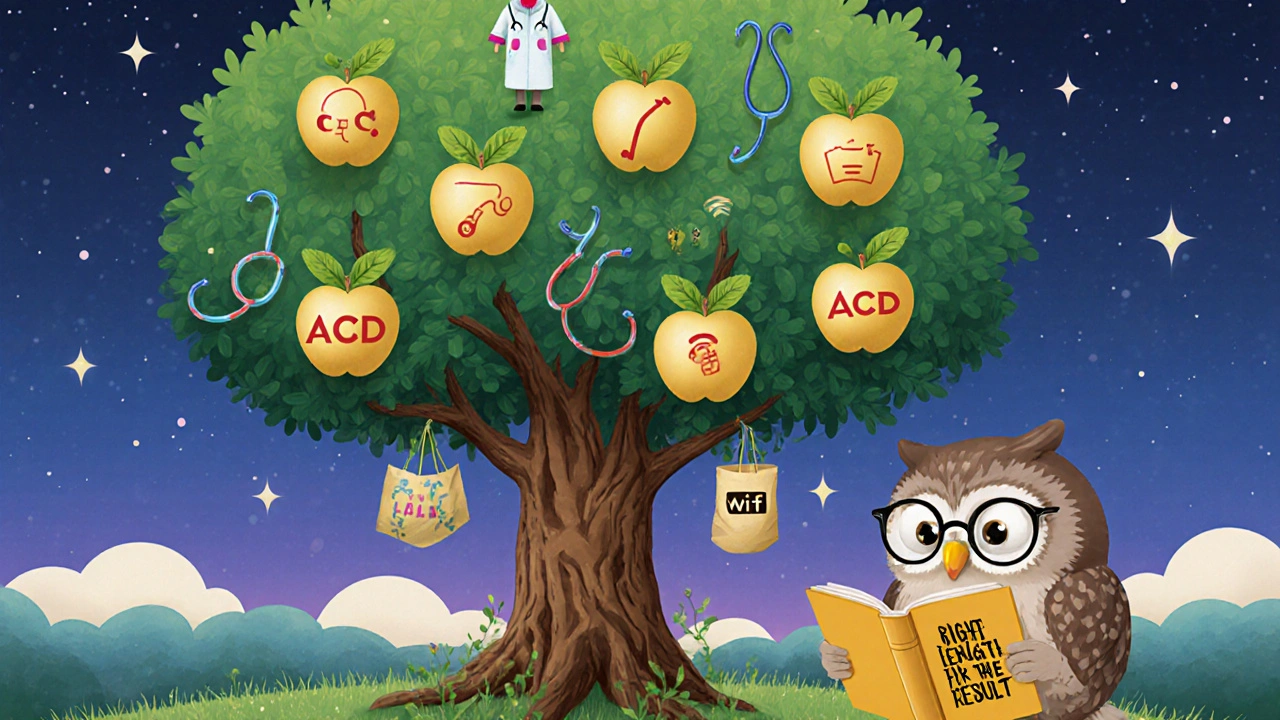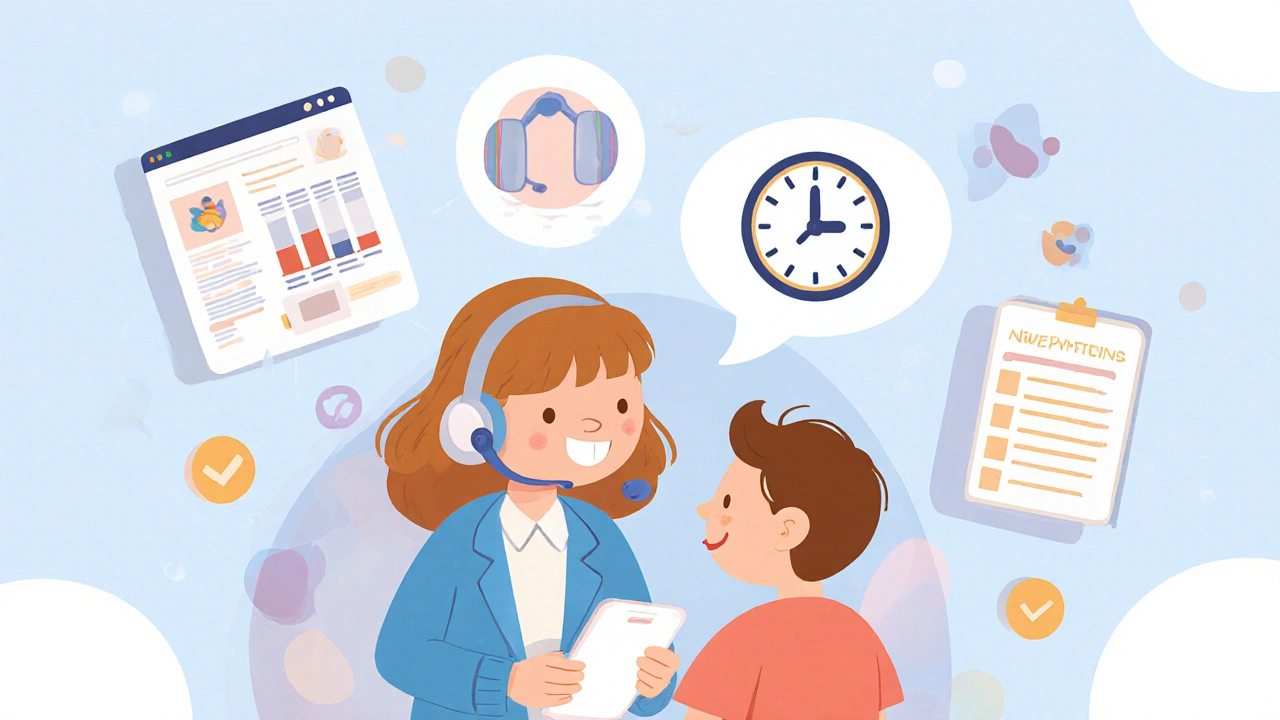When a customer calls your business, how long should the conversation last? Too short, and they might feel rushed. Too long, and your agents are bogged down. The answer isn’t about speed-it’s about average call duration. This metric tells you exactly how long, on average, your agents spend talking to customers during each call. It’s not about cutting calls short. It’s about making sure every minute counts.
What Exactly Is Average Call Duration?
Average Call Duration (ACD) is the total time spent in live conversation between an agent and a customer, divided by the number of calls answered. It includes talk time and any hold time initiated by the agent. But here’s the key: it excludes everything that happens after the call ends. No note-taking. No updating the CRM. No closing out tickets. That’s called wrap-up time-and it’s part of a different metric, Average Handle Time (AHT).Think of it this way: ACD measures the actual conversation. AHT measures the whole job. If an agent spends 4 minutes talking to a customer and then 3 minutes filling out forms, their ACD is 4 minutes. Their AHT is 7 minutes. Confusing the two leads to bad decisions. Many call centers mistakenly think they’re improving efficiency when they’re just pushing agents to skip follow-up tasks. That’s not efficiency-that’s customer frustration waiting to happen.
How to Calculate Average Call Duration
The math is simple, but the execution needs precision.Here’s the formula:
ACD = Total Call Duration (in seconds) ÷ Number of Calls Answered
Let’s say your team handled 120 calls in a day. The total time spent on live conversations was 8 hours, 17 minutes, and 30 seconds. Convert that to seconds:
- 8 hours × 3,600 = 28,800 seconds
- 17 minutes × 60 = 1,020 seconds
- 30 seconds = 30 seconds
- Total = 28,800 + 1,020 + 30 = 29,850 seconds
Now divide: 29,850 ÷ 120 = 248.75 seconds. That’s about 4 minutes and 9 seconds per call.
Most modern platforms like Aloware, Daktela, or Call Center Studio do this automatically. But if you’re pulling numbers manually, always convert to seconds. Using minutes and decimals introduces rounding errors that add up over time.
Industry Benchmarks: What’s Normal?
There’s no universal "good" number. What’s normal in healthcare is way too short for telecom. Here’s what real data shows for 2025:| Industry | Average Duration | Seconds |
|---|---|---|
| Healthcare & Life Sciences | 2.5 minutes | 149 |
| Financial Services | 3.5 minutes | 208 |
| Business & IT Services | 4.7 minutes | 282 |
| Retail | 5.4 minutes | 324 |
| Telecommunications | 8.8 minutes | 528 |
Why the big differences? It’s about complexity. A healthcare call might be a quick prescription refill. A telecom call could involve troubleshooting a router, checking billing errors, and setting up a new service-all in one conversation. If your retail team’s ACD is under 3 minutes, you’re probably not solving problems. You’re just ending calls.

Why ACD Matters More Than You Think
ACD isn’t just a number on a dashboard. It’s a mirror of your customer experience.Longer calls? Sometimes that means agents are digging deep to fix real problems. Shorter calls? Sometimes that means customers are hanging up unsatisfied. The goal isn’t to make calls shorter-it’s to make them effective.
Here’s what ACD reveals:
- Training gaps: If one agent’s ACD is 2x higher than the team average, they might be missing scripts, product knowledge, or decision tools.
- Process bottlenecks: If calls keep running long on the same issue, maybe your knowledge base is outdated or your IVR sends people to the wrong department.
- Customer frustration: If ACD drops suddenly after a system update, customers might be hanging up early because they can’t get help.
One UK-based financial services firm noticed their ACD jumped from 210 to 270 seconds over two weeks. Instead of pressuring agents, they reviewed call recordings. They found customers were asking the same question about a new fee. The problem wasn’t the agents-it was a missing FAQ on their website. Fixing that one page dropped ACD back to 205 seconds within a week.
ACD vs. AHT: The Critical Difference
This mistake breaks call centers.ACD = Talk + Hold Time (agent-initiated only)
AHT = Talk + Hold + Wrap-up Time
Let’s say an agent handles 10 calls:
- Total talk time: 200 minutes
- Total hold time: 50 minutes
- Wrap-up time: 20 minutes
ACD = (200 + 50) ÷ 10 = 25 minutes per call
AHT = (200 + 50 + 20) ÷ 10 = 27 minutes per call
That 2-minute gap is the agent’s administrative work. If you optimize for AHT alone, you’ll push agents to rush through documentation. That leads to errors, compliance risks, and repeat calls. But if you optimize for ACD, you focus on the conversation-where the customer’s experience actually happens.
Best practice? Track both. Use ACD to measure interaction quality. Use AHT to manage workload. Never let one replace the other.
How to Use ACD to Improve Performance
Don’t just measure-act.Here’s how top teams use ACD:
- Spot outliers: If an agent’s ACD is consistently 50% above or below the team average, investigate. Are they over-explaining? Are they missing cues? Do they need better tools?
- Pair with CSAT: If ACD drops but customer satisfaction scores fall, you’re sacrificing quality for speed. That’s a red flag.
- Track by call type: Sales calls, support calls, billing inquiries-they all have different expected durations. Segment your data.
- Use real-time alerts: Platforms like Daktela let you set thresholds. If a call hits 8 minutes, a manager gets a ping. That’s not to cut the call-it’s to offer help if the agent’s stuck.
- Integrate with CRM: If agents can see a customer’s history in one click, they don’t waste time asking for basic info. That cuts ACD naturally.
One call center in Exeter reduced their ACD by 18% over six months-not by rushing calls, but by giving agents better access to billing records and product manuals. The result? Fewer repeat calls, higher CSAT, and agents reporting less stress.

What’s Next for ACD? AI and Beyond
By 2025, the best call centers aren’t just tracking ACD-they’re predicting it.Platforms like Aloware now use AI to forecast call length based on:
- Customer history
- Call reason (e.g., "billing dispute" vs. "account activation")
- Time of day
- Agent experience level
This lets managers route calls smarter. A complex issue goes to a senior agent before it even rings. A simple question gets sent to a chatbot. That reduces unnecessary long calls.
Some systems are even testing voice stress analysis to detect frustration or confusion during a call. If the AI senses rising tension, it might nudge the agent to slow down-or offer a supervisor.
But here’s the truth: ACD won’t disappear. Even as omnichannel support grows, phone calls still carry the most emotional weight. Customers call when they’re stuck. They don’t email that.
What’s changing is how we interpret it. The old goal-"shorter calls = better"-is dead. The new goal? "The right length for the right result."
Common Mistakes to Avoid
Most teams mess up ACD in these ways:- Confusing it with AHT: 37% of call centers get this wrong, according to Call Center Studio. Double-check your reports.
- Ignoring agent experience: New hires will have longer calls. That’s normal. Compare agents to their own baseline, not to veterans.
- Optimizing without context: Don’t cut ACD just because the boss wants it lower. Look at CSAT first.
- Not segmenting data: Sales calls and support calls aren’t the same. Group them separately.
- Forgetting wrap-up time: If you’re trying to reduce ACD by cutting documentation, you’re just creating more work later.
The best call centers don’t chase numbers. They chase understanding.
What’s a good average call duration for a call center?
There’s no single "good" number. It depends on your industry. Healthcare calls average 2.5 minutes, retail around 5.4 minutes, and telecom can hit 8.8 minutes. Focus on your own benchmarks and whether customers are getting their issues resolved, not on hitting an arbitrary target.
Does a shorter call duration mean better service?
Not necessarily. A short call can mean the agent solved the problem quickly-or it can mean the customer hung up because they couldn’t get help. Always pair ACD with customer satisfaction (CSAT) scores. If CSAT drops as ACD falls, you’re rushing. If CSAT stays high and ACD drops, you’re improving.
How is average call duration different from average handle time?
Average Call Duration (ACD) measures only the time spent talking to the customer, including hold time. Average Handle Time (AHT) includes everything after the call ends-like updating records or sending follow-up emails. ACD is about the conversation. AHT is about the whole job.
Can ACD be too low?
Yes. If your ACD is significantly below your industry benchmark and customer satisfaction is falling, you’re likely cutting corners. Customers calling for complex issues shouldn’t be rushed. In some cases, letting ACD rise slightly-by 10-20%-can lead to fewer repeat calls and better long-term outcomes.
How often should I check my average call duration?
Check daily to spot trends, especially after system updates or new training. Weekly reviews help you see patterns across shifts and agents. Monthly deep dives let you compare against industry benchmarks and track the impact of process changes.
Do I need special software to track ACD?
You don’t need fancy tools, but you do need accurate data. Most modern VoIP and cloud call center platforms like Aloware, Daktela, or Call Center Studio track ACD automatically. If you’re using a basic system, you can calculate it manually using total call seconds divided by call count-but you’ll miss real-time insights and agent-level breakdowns.
Should I set ACD targets for my agents?
Don’t set hard targets. Instead, set expectations based on your industry and call type. Use ACD as a diagnostic tool-not a performance penalty. If an agent’s ACD is off, investigate why. Maybe they need better training, better tools, or more support-not a warning.
Final Thought: It’s Not About Speed, It’s About Clarity
Average call duration isn’t a race. It’s a signal. A high ACD doesn’t mean your team is slow. A low ACD doesn’t mean they’re efficient. What matters is whether the customer walked away feeling heard, understood, and helped.The best call centers don’t measure calls to cut them short. They measure them to make them better.
